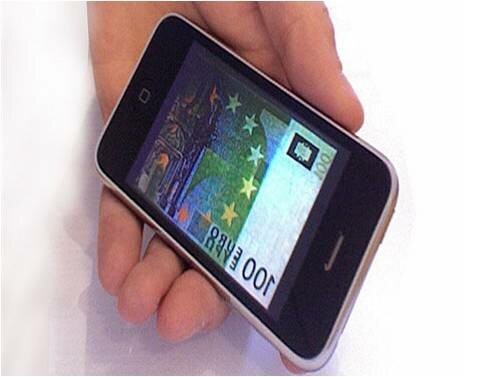Author Archive
02/05/2012 13:25 by Ryan Garner

By Ryan Garner (GfK) and Alex Kozlof (IAB UK)
The irrepressible tide of smart, connected, mobile devices is changing the way we shop at every stage of the purchase process. This poses new opportunities and challenges for product marketers and retailers in both the online and offline world.
The ‘always on’ nature of smartphones – not just in your pocket but also connected to the internet – makes them the perfect companion for shoppers throughout the entire purchase journey, both online and offline. Recent research by the IAB and GfK shows that while PCs (laptops and/or desktop computers) are still the most used devices throughout the online purchase process, smartphones are an increasingly important complement to existing methods of shopping. The number of shoppers using smartphones will inevitably increase, but this usage will in many cases be in conjunction with the PC or an aid to the consumer while in store. Indeed, the research showed that the most common behaviour was for the smartphone and PC to be used together in the purchase process rather than independently.
Tags: online shopping, purchase journey, Retailers, Smartphones
Posted in Retail, Smartphones | No Comments »
27/07/2011 10:38 by Ryan Garner and Cynthia Vieira
The youth market is accelerating technological adoption in Brazil which is radically changing consumer needs especially in how they’re entertained and how they socialise.

The internet and technological innovation has firmly gripped the new youth generation in Brazil. The Brazilian youth are using the internet in very similar ways to mature markets. It is becoming a primary source of entertainment and a means to communicate and make their voice be heard. The core values and needs of young consumers in Brazil are very different to their predecessors. As a result, the Brazilian youth are redefining consumerism in this exciting new country and what is clear is that their hunger to consume will create opportunities that previously did not exist.
The radically different needs of Brazil’s new youth generation
This is a preview of
How the youth are fuelling technological adoption in vibrant Brazil
.
Read the full post (959 words, 1 image, estimated 3:50 mins reading time)
Tags: Aspirations, Brazil, BRIC, Consumerism, Emerging Markets, Multi Screen, Smartphones, Social Media, Youth Market
Posted in Trends | 1 Comment »
25/07/2011 08:56 by Ryan Garner and Rob Barrish
Consumers are now using various connected devices to socialize, communicate and access a plethora of content and services. Smartphones have accelerated this trend and allow consumers to manage more of their personal and work lives without being restricted by location or time. Cloud based services are the next step in liberating consumers’ most loved content and service as the device is removed as a barrier to access. Network infrastructure is central to this shift to the cloud. 4G networks are the catalyst needed and security the hurdle to overcome. However, with learnings from the enterprise sector, security is not only an obstacle but can also serve as a driver for adoption.

Tags: 3G, 4G, Apple, DECE, Digital Locker, , iCloud, Intel, Microsoft, Netflix, Network Strain, Paramount, Privacy, Samsung, Security, Sony, The Cloud, Ultraviolet, Windows 365, Wrner Brothers
Posted in The Cloud | No Comments »
02/02/2011 10:30 by Ryan Garner
Smartphones are competing with dedicated personal navigation devices (PNDs) for market share but recent research shows that PNDs are still preferred for in-car navigation. Smartphones can begin to win more market share by improving their user experience and integrating popular social networking and location based services.

Usage of mobile mapping and navigation services is booming. Almost a year ago Nokia announced that its mobile navigation service, Ovi Maps, would be free with a compatible Nokia handset. In the first week alone the service had been downloaded over 1.4 million times. According to Wikipedia Ovi Maps is now available in 74 countries and in 46 different languages. Similarly, Google now offers its mobile navigation services in 12 countries and it has proved a big hit with Google Android smartphone owners. Consequently, in the space of a couple of years the PND market has changed dramatically, with global in car satellite navigation providers such as TomTom and Garmin facing fresh competition from the all gadget devouring smartphone.
This is a preview of
The trend towards mobile navigation usage will not destroy demand for PNDs… at least not in 2011 anyway
.
Read the full post (725 words, 1 image, estimated 2:54 mins reading time)
Tags: Consumer, , , , LBS, Location, Location Based Services, Mobile Maps, Mobile Navigation, Nokia, Ovi Maps, Personal Navigation Device, PNDs, Sat Nav, TomTom
Posted in Location Based Services | 3 Comments »
26/01/2011 14:11 by Ryan Garner
Many mobile companies and big brands are ready to launch mobile payment services this year. Although there is a healthy amount of consumer scepticism, there is also enough interest among early adopters and smartphone users to make this a success.

Last month TechTalk published a post about NFC (Near Field Communication) based mobile services becoming adopted among a wider consumer base in 2011. At the time of publishing we highlighted a number of new services and advances being made, from small start-ups to smartphone giants such as Apple, Google and Nokia. Now we’re almost one month into 2011 the news and developments on NFC, in particular mobile payments, continues to hit the headlines in the technology press. Most notably, O2[1] is beefing up their m-payments team ahead of its NFC based mobile payments service launch later this year, whilst Google announced the launch of Android 2.3 OS (Gingerbread)[2], which adds support for NFC.
Tags: Android, Apple, Contactless Payments, iPhone 5, Mobile Pay App, Mobile Payments, Mobile Wallet, Near Field Communication, Network Operators, NFC, Nokia, O2, Smartphones, User Experience, UX
Posted in Mobile Payments | 1 Comment »
30/11/2010 10:28 by Ryan Garner
Gone are the days consumers choose mobile phones based solely on their features and functions. New research by GfK[1] shows that smartphone owners in key global markets buy into the ‘experiences’ created by the mobile ecosystem and the majority (56%) are ‘keeping their options open’, when deciding their next smartphone purchase.

Every quarter brings new reports of rapid growth in smartphones sales but a key question left unanswered is what is actually driving purchase in the high end smartphone category? Understanding drivers of purchase is naturally a complex subject due to the sheer number of factors that influence consumer decision making. Looking back as little as 3 years ago, the primary focus for many consumers was acquiring a well designed phone packed with the latest technology such as Wi-Fi, GPS, high resolution camera and so on. In recent years, however, development in mobile hardware has slowed and is arguably becoming less important. Of course, consumers still want good looking handsets with the latest technology, but with so much choice and less differentiation the mobile handset is potentially becoming a more commoditised purchase.
This is a preview of
The smartphone market is there to be won… In 2011 the ‘mobile ecosystem’ will be critical to driving loyalty
.
Read the full post (1286 words, 4 images, estimated 5:09 mins reading time)
Tags: Android, App Store, Apple, Blackberry, Consumer, , Handsets, iOS, iPhone, MeeGo, Mobile OS, Mobile Services & Apps, Nokia, Research, RIM, Smartphones, Social Networks, Symbian, Windows Phone 7
Posted in Mobile Ecosystems | 4 Comments »
18/11/2010 12:51 by Ryan Garner
Google has grown their share of the UK internet browser market by 6% year on year; equating to 2.3 million extra consumers who have switched from Microsoft’s Internet Explorer.
Data from the GfK NOP Internet Browser Tracker in the UK shows that market share for all major web browsers has remained static since November 2009, with the exception of Google Chrome and Microsoft’s Internet Explorer. The graphic below shows that Internet Explorer’s lost market share has been Google’s gain:

Back in February 2010 Microsoft were forced to offer a choice of browsers to any consumers using one of their operating systems (i.e. Windows); the so-called ‘browser ballot”. GfK’s data suggests that since then many people in the UK have actually stuck with what they know, resulting in little movement overall. What’s particularly interesting is that Firefox has not been able to grow its market share, with Google capturing those interested in trying something different.
This is a preview of Google Chrome gains an extra 2.3 million users in the UK over the past year
.
Tags: Chrome, Consumer, Firefox, , Internet, Internet Browser, Internet Explorer, Market Share, Opera, Safari, Windows
Posted in Internet Browsers |
28/10/2010 11:22 by Ryan Garner
In the PC market, Microsoft’s Windows OS is as common as the mobile phone in your pocket. However, Windows Mobile has struggled to capture the imagination of both consumers and businesses. In fact, with a rapidly declining 5% [1] of the global smartphone market it’s fair to say that relatively speaking Windows Mobile has been a horrible failure. But that’s all about to change.

Recent research by GfK NOP [2] shows that interest in Windows Phone 7 (the catchy name given to the successor of Windows Mobile 6.5) is strong. Almost one in five (18%) of UK mobile phone owners say they would consider a Windows Phone 7 (let’s go with WP7 from here on in) handset (available on HTC and Samsung devices among others) when they next come to renew, upgrade or buy their next mobile phone. Of course current smartphone owners display much higher levels of interest (32%). What’s more, Microsoft will be pleased to hear that of all smartphone owners, those using Google’s Android will be most interested (41%) in WP7. So what’s changed?
This is a preview of
Why Windows Phone 7 demands high levels of consumer interest
.
Read the full post (821 words, 2 images, estimated 3:17 mins reading time)
Tags: Android, App Store, Apple, Blackberry, Consumer, Digital Music, Ecosystem, Handsets, iPhone, Market Share, Microsoft, Mobile OS, Mobile Services & Apps, Nokia, Palm, Research, RIM, Smartphones, Social Networks, Windows, Windows Phone 7, XBOX 360
Posted in Smartphones | 1 Comment »
11/08/2010 15:28 by Ryan Garner
Recent research conducted by GfK NOP shows that, among smartphone owners, mobile data allowance is more important than the network operator and the handset type.
From previous posts on TechTalk we’ve shown how the use of mobile apps shows no sign of abating and that the tight integration of services on the iPhone drives Apple’s smartphone success. This thirst for apps and services is the reason why smartphone owners are placing greater importance on their mobile data allowance. Smartphone owners now rely on the services their phone provides and taking these away is not an option.
With many UK operators having recently capped their data allowances, smartphone owners will think carefully about their next mobile tariff. GfK NOP estimates that 24 per cent of contract customers using smartphones would actually switch operators if they could get a better mobile data allowance elsewhere.
This is a preview of
Mobile data allowance grows in importance among smartphone owners
.
Read the full post (443 words, 1 image, estimated 1:46 mins reading time)
Tags: Capped Data, Consumer, Handsets, iPhone, Mobile Data Allowance, Mobile Services & Apps, Network Operators, Network Performance, Smartphones
Posted in Mobile Networks | No Comments »
10/06/2010 17:15 by Ryan Garner
Growth returns to Western European consumer technology markets in Q1 2010. GfK TEMAX data shows that consumers are more willing to upgrade their home technology as well as experiment with new smartphone mobile technology.

GfK TEMAX data shows that, overall, the consumer technology market recorded 2.7% growth in Q1 this year compared to Q1 in 2009. Key technology sectors have recorded year on year growth, including Telecommunications (+4.9%), Information Technology (+3.6%) and Consumer Electronics (+0.7%) in Q1 2010. Smartphones, Windows 7 and LCD TVs are all driving factors of growth in their respective sectors.
Smartphones continue to drive growth in the Telecommunications market
While the telecommunications market declined by -3.2% in the fourth quarter 2009, the first quarter of 2010 returned to growth with a +4.9% increase year on year.
This is a preview of
Recovery in full swing for consumer technology markets… and it’s expected to last
.
Read the full post (879 words, 1 image, estimated 3:31 mins reading time)
Tags: Consumer, GfK TEMAX, LCD TVs, Market Share, Microsoft, Smartphones, Windows 7, World Cup
Posted in Trends | 2 Comments »
Page 1 of 212»









